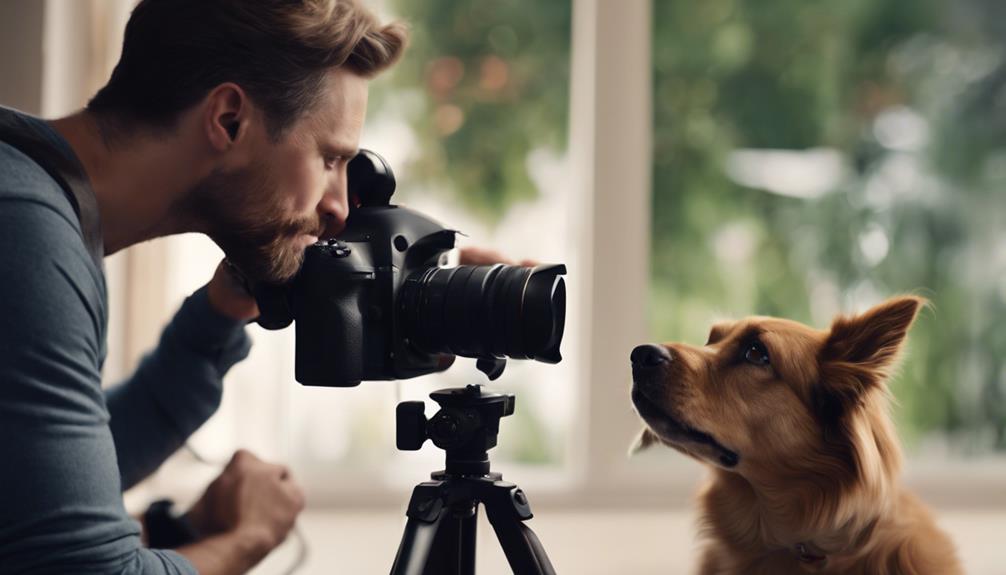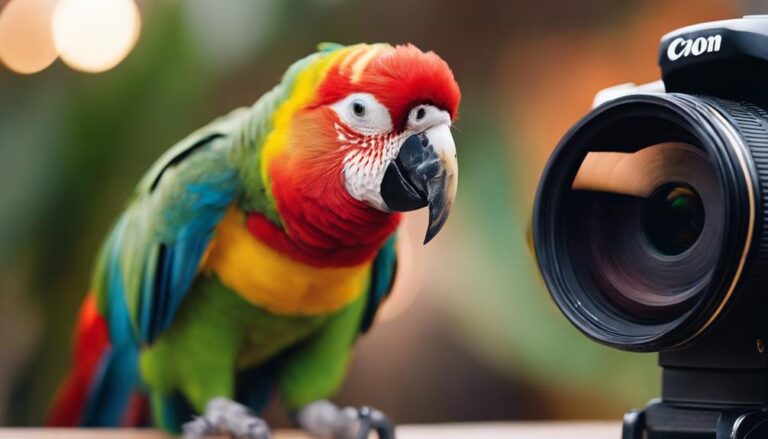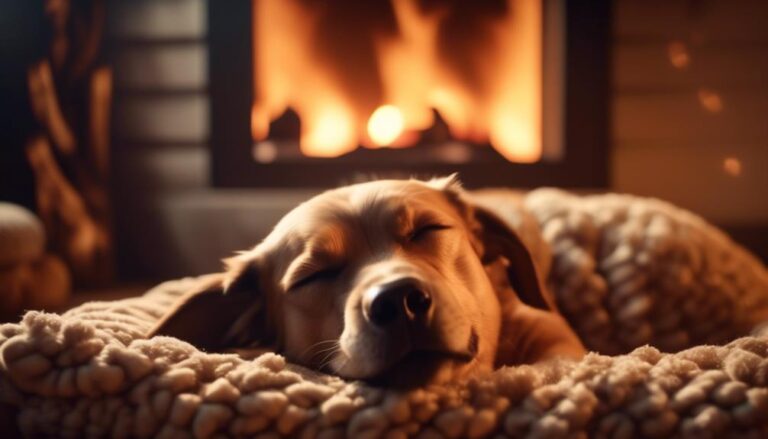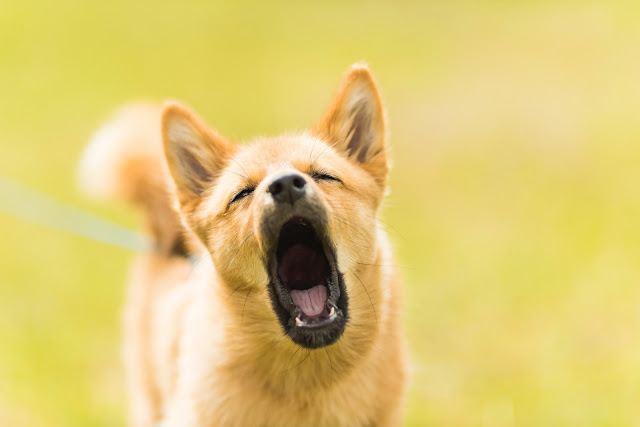Join our pet photography posing techniques class to elevate your skills! Learn to observe behavior patterns for the best poses. Choose ideal locations and utilize natural light for vibrant images. Experiment with angles and incorporate props to enhance compositions. Tailor poses to different breeds and master action shots. Practice consistently to refine your techniques and capture unique pet personalities. Ready to enhance your pet photography skills further, expanding your knowledge on creating authentic moments and expressions that truly shine. Explore the world of pet photography posing techniques with us!
Understanding Pet Behavior
To capture the best pet photography poses, observe and understand your pet's behavior patterns closely. Understanding body language is key to capturing natural and engaging photos of your furry friend. Pay attention to how your pet moves, their facial expressions, and any signals they may be giving off. Dogs, for example, might wag their tail when they are happy or excited, while cats may flick their ears back when they are feeling agitated. By familiarizing yourself with these cues, you can anticipate when the perfect moment for a photo arises.
Training techniques can also play a significant role in helping you achieve great pet photography poses. Teaching your pet basic commands such as "sit," "stay," or "look" can be invaluable during a photoshoot. These commands can help you direct your pet towards the desired pose or position, making the photography process smoother and more efficient. Positive reinforcement methods, such as using treats or toys, can motivate your pet to cooperate and strike the perfect pose.
Choosing the Right Location
When selecting the right location for your pet photography session, consider the backdrop and lighting carefully. The ideal backdrop can enhance your pet's features and create a visually appealing composition. Lighting considerations play an essential role in capturing clear and vibrant images of your furry friend.
Ideal Backdrop Selection
Choosing the ideal backdrop for your pet photography session can greatly enhance the overall quality of your images. When selecting a location, consider color coordination with your pet's fur and the surrounding environment. Scenic settings can provide a beautiful backdrop for your furry friend. Opt for backgrounds that complement your pet's features and bring out their personality. Creative poses often work well in playful environments, such as parks or beaches, where your pet can freely express themselves. Remember that the backdrop should not overpower your pet but rather enhance their presence in the photo. By choosing the right location and backdrop, you can capture stunning pet portraits that truly stand out.
Lighting Considerations
Choose a location with ideal lighting conditions to guarantee that your pet is beautifully illuminated in your photographs. When selecting a spot for your pet photography session, consider the following:
- Natural Light: Opt for areas with ample natural light to create a soft and flattering glow on your pet's fur. Natural light can help capture the true colors and textures of your pet's coat, enhancing the overall quality of the image.
- Indoor Settings: Experiment with indoor locations that offer unique angles and settings for your pet photoshoot. Indoor environments can provide a controlled setting for capturing creative poses and expressions from your pet.
- Artificial Lighting: In cases where natural light is limited, consider using artificial lighting sources to supplement and enhance the illumination in your pet portraits. Be mindful of the direction and intensity of the artificial light to avoid harsh shadows and overexposure.
Utilizing Natural Light
When photographing pets, using natural light can greatly enhance your images. Sunlight can create beautiful highlights and shadows that add depth and dimension to your pet portraits. Paying attention to the direction and quality of light can help you achieve the desired textures in your photos.
Sunlight for Pet Portraits
To capture stunning pet portraits using natural light, position your furry subject strategically in the path of the sunlight. Here are some tips to make the most of the sunlight for your pet photography:
- Golden Hour Magic: Utilize the warm, soft light during the golden hour, shortly after sunrise or before sunset, for a flattering glow on your pet's fur.
- Silhouette Play: Experiment with creating striking silhouettes by placing your pet in front of the sun, capturing their outline and unique shapes for creative ideas.
- Backlight Brilliance: Use backlighting to add depth and a luminous quality to your pet portraits, creating a halo effect around their fur for a magical touch.
Shadows and Textures
Position your pet in a way that allows natural light to cast intriguing shadows and highlight textures in your pet photography. Shadow play and texture contrast can add depth and interest to your images. Experiment with different angles to see how the light interacts with your pet's fur or feathers. Creative lighting techniques, such as backlighting or side lighting, can create dramatic effects that emphasize textures. Consider the artistic composition when incorporating shadows and textures into your photos. Use shadows to frame your pet or create patterns that enhance the overall look of the image. By paying attention to these details, you can elevate your pet photography and capture unique moments with depth and dimension.
Selecting the Best Angles
For the most flattering pet photos, consider the angles from which you capture your furry friend. When selecting the best angles for pet photography, keep in mind the following tips to enhance your shots:
- Experiment with Different Heights: Try capturing your pet from various heights to find the most flattering angle. Get down to their eye level for a more personal and engaging shot. Alternatively, shooting from above can showcase their unique markings and features.
- Use Leading Lines: Incorporate elements like fences, paths, or tree branches to lead the viewer's eye towards your pet. This technique not only adds interest to the composition but also helps in guiding attention to your furry companion.
- Play with Symmetry and Asymmetry: Explore both symmetrical and asymmetrical compositions when framing your pet. Centered shots can create a sense of balance and formality, while off-center placements can add a dynamic and playful feel to the image.
Incorporating Props
When incorporating props into your pet photography sessions, consider prop selection tips to enhance your images. Think about interactive prop ideas that can bring out your pet's personality and create engaging photos. Additionally, pay attention to the composition when using props to make sure they complement your furry subject effectively.
Prop Selection Tips
Consider incorporating props that complement your pet's personality and add an extra element of interest to your pet photography sessions. When selecting props for your pet photography session, keep in mind prop styling and pet accessories to enhance the overall look. Here are some prop selection tips to elevate your photos:
- Reflect your Pet's Character: Choose props that align with your pet's unique traits and interests.
- Scale and Size: Make sure the props are proportionate to your pet's size to avoid overwhelming or overshadowing them.
- Color Coordination: Select props with colors that complement your pet's fur or contrast to make them stand out.
Pet Interaction Ideas
To create engaging pet photography sessions, incorporate props that encourage playful interactions between your pet and the objects, enhancing the overall charm and character of your photos. Interactive poses and engaging activities with props can lead to capturing playful moments and creative shots. Consider using toys that make noise or have textures to pique your pet's curiosity, encouraging dynamic movements and expressions. Props like balls, frisbees, or even a soft blanket can create opportunities for candid shots full of energy and joy. Incorporating treats or food puzzles can also result in adorable and enchanting photos as your pet interacts with the prop while looking for treats. These interactions bring out the unique personality of your pet, adding depth and fun to your photography sessions.
Composition With Props
Incorporate props strategically to enhance the composition of your pet photography, adding depth and interest to your shots. Here are some tips to make the most out of props:
- Creative prop usage: Experiment with different props like hats, toys, or themed accessories to bring a unique element to your pet photoshoot.
- Posing variety: Use props to encourage different poses from your pet, creating a dynamic range of shots that showcase their personality and expressions.
- Natural integration: Guarantee props blend seamlessly with the environment and your pet, avoiding distractions and maintaining focus on your furry subject. By mastering the art of prop incorporation, you can elevate your pet photography with creativity and flair.
Creating a Connection
Forge a genuine bond with the pet you are photographing to capture authentic and heartfelt moments in your images. Establishing trust is key to creating a connection that will allow you to capture the true essence of the pet. Spend some time getting to know the pet before the photoshoot. Approach them calmly, speak softly, and offer treats to build a sense of trust. This will help the pet feel comfortable around you, resulting in more natural and relaxed poses.
Capturing emotion is another vital aspect of creating a connection in pet photography. Pay attention to the pet's body language and facial expressions. These subtle cues can convey a range of emotions, from joy and excitement to calmness and curiosity. By observing these signs, you can anticipate moments where the pet's personality shines through, allowing you to capture genuine emotions in your photographs.
During the photoshoot, interact with the pet in a way that brings out their unique traits and characteristics. Engage with them through play or by using their favorite toys to evoke natural reactions. Encourage the pet to express themselves freely, whether it's through their playful antics or their quiet moments of contemplation. Remember, the more you connect with the pet on a personal level, the more authentic and emotive your pet photography will be.
Emphasizing Expressions
Establish a strong connection with the pet's eyes, as they are the window to capturing genuine and emotive expressions in pet photography. When focusing on emphasizing expressions in your pet photography, paying attention to their facial expressions and body language is essential. Here are three key tips to help you bring out the best in your furry subjects:
- Watch for Subtle Facial Expressions: Dogs and cats often communicate through subtle facial cues. Keep a keen eye on their expressions, such as relaxed eyes indicating comfort or perked ears showing interest. These small details can add depth and emotion to your photographs.
- Capture Playfulness and Joy: Encourage playful interactions to capture genuine expressions of joy and excitement. Whether it's a dog's wagging tail or a cat's playful pounce, these moments of liveliness can create dynamic and engaging photos.
- Use Body Language to Convey Emotion: A pet's body language can speak volumes. Pay attention to their posture, tail position, and overall stance. A relaxed, open posture can convey a sense of ease, while a tense body may indicate fear or apprehension. By understanding and utilizing their body language, you can enhance the emotional impact of your pet portraits.
Working With Different Breeds
When working with different breeds in pet photography, understanding their unique characteristics and traits is essential for capturing their distinct personalities effectively. Each breed has specific characteristics that can influence how they should be posed to showcase their best features. For example, brachycephalic breeds like Bulldogs may require poses that highlight their adorable wrinkled faces, while breeds with long flowing coats such as Afghan Hounds may benefit from poses that emphasize the elegance of their fur.
Breed characteristics play a significant role in determining the best poses for each pet. For instance, smaller breeds like Chihuahuas may look best in poses that make them appear larger than life, while larger breeds like Great Danes may benefit from poses that show off their impressive size and stature. Posing tips can vary widely depending on the breed, so it's important to familiarize yourself with the specific traits of each breed you work with.
Despite the diversity in breed characteristics, there are some common breed-specific posing challenges that pet photographers may encounter. For example, some breeds may be more energetic and have difficulty staying still for poses, while others may be shy or easily startled. Overcoming these challenges requires patience, creativity, and a good understanding of each breed's behavior to capture the perfect shot.
Mastering Action Shots
To excel in capturing dynamic moments in pet photography, mastering action shots is essential. These shots freeze the energy and liveliness of pets in motion, creating engaging and vibrant images. Here are some tips to help you master action shots:
- Use a Fast Shutter Speed: To effectively capture movement, set your camera to a fast shutter speed. This helps freeze the action and prevents blur, especially when pets are running or playing.
- Anticipate the Action: Familiarize yourself with the pet's behavior to anticipate their movements. Being prepared allows you to adjust your position and settings swiftly, ensuring you capture the perfect moment.
- Experiment with Angles: Get down to the pet's eye level or try shooting from different angles to add dynamism to your shots. Experimenting with perspectives can result in unique and captivating images, showcasing the pet's dynamic poses.
Editing Tips and Tricks
To enhance the visual impact of your captured action shots, mastering editing tips and tricks is pivotal. When it comes to pet photography, editing plays an essential role in refining your images. Start by focusing on color correction and retouching. Adjust the color balance to make your pet's fur look vibrant and true to life. Use retouching tools to remove any blemishes or imperfections, ensuring your furry friends look their best in every shot.
Background removal is another vital editing technique to make your pets stand out. By eliminating distracting backgrounds, you can create a clean and professional look. Consider adding effects to enhance the mood of your photos. From subtle filters to artistic overlays, effects can add an extra layer of creativity to your pet portraits.
When editing your pet photos, remember that less is often more. Avoid over-editing, which can make your images look unnatural. Instead, focus on enhancing the existing beauty of your pets. Practice using different editing tools and techniques to find what works best for your style. With time and experimentation, you'll develop a unique editing process that elevates your pet photography to the next level.
Practice Makes Perfect
For mastering pet photography posing techniques, consistent practice is key to achieving perfection in capturing your furry friends' best angles and expressions. By engaging in regular practice drills and focusing on specific posing techniques, you can enhance your skills and create stunning pet portraits that truly stand out. Here are some strategies to help you make the most out of your practice sessions:
- Set Aside Dedicated Practice Time: Schedule regular practice sessions where you can focus solely on honing your pet photography skills. Whether it's practicing different poses with your own pets or setting up mock photo shoots with willing friends' pets, consistent practice is essential for improvement.
- Experiment with Various Posing Techniques: Explore different posing techniques to understand what works best for different pets and situations. Try out classic poses like sitting or lying down, as well as more dynamic poses like jumping or playing. Each pet has its own unique personality, so experimenting with various poses can help you capture their individuality.
- Seek Feedback and Learn from Mistakes: Don't be afraid to seek feedback from fellow pet photographers or mentors. Constructive criticism can help you identify areas for improvement and refine your posing techniques. Additionally, learn from your mistakes during practice sessions to continuously grow and evolve as a pet photographer. Remember, practice makes perfect, so keep honing your skills to capture those picture-perfect moments with your furry subjects.
Frequently Asked Questions
How Can I Prepare My Pet Before the Photoshoot to Make Sure They Are Comfortable and Cooperative?
To prepare your pet for a photoshoot, begin with grooming and training methods. Select a cozy spot and bring props to keep them interested. This will help guarantee your pet feels comfortable and cooperative during the session.
What Are Some Tips for Dealing With Pets That Are Nervous or Easily Distracted During the Photoshoot?
To handle anxiety and manage distractions during a pet photoshoot, try incorporating calming techniques like soothing music or gentle petting. Engage your pet with toys or treats to keep their focus. Consistency and patience are key.
Are There Any Specific Camera Settings or Equipment Recommendations for Capturing High-Quality Pet Photos?
To capture high-quality pet photos, adjust your camera settings for sharpness and clarity. Use a fast shutter speed to freeze motion and a wide aperture for a blurred background. For equipment, consider a telephoto lens for close-up shots.
How Can I Incorporate My Pet's Unique Personality and Characteristics Into the Photoshoot?
To capture your pet's unique personality and characteristics in photos, try incorporating their favorite toys or treats, choosing settings that reflect their energy, and capturing candid moments of playfulness. Creative background ideas can enhance their individuality.
Are There Any Resources or Recommendations for Furthering My Skills in Pet Photography Beyond This Class?
Looking to enhance your pet photography skills? Check out online workshops for hands-on learning and photography books for in-depth knowledge. These resources can provide valuable insights and tips to take your craft to the next level.
Conclusion
Now that you've learned the essential pet photography posing techniques, it's time to put them into practice. Remember to be patient and observant of your furry subjects' behavior, choose the perfect location and lighting, and have fun experimenting with different angles and props. With practice, you'll become more confident in capturing stunning pet portraits that truly showcase their personalities. Keep honing your skills and never stop learning!









